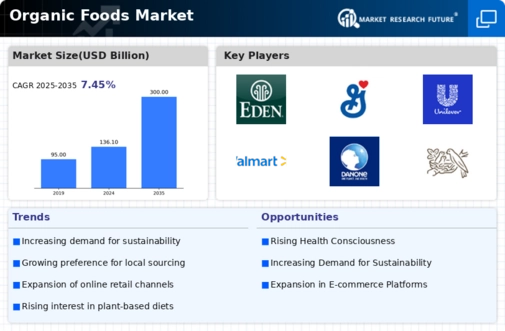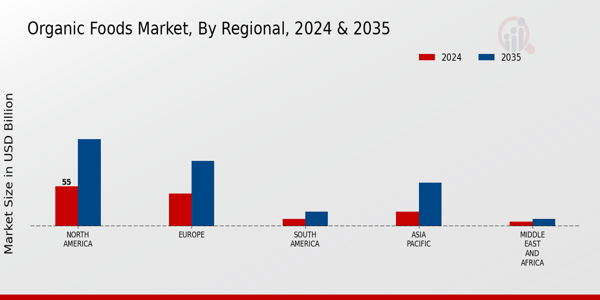Organic Foods Market Summary
As per Market Research Future Analysis, the Global Organic Foods Market is experiencing significant growth, driven by increasing consumer health consciousness and sustainable practices. The market was valued at 202.70 USD Billion in 2024 and is projected to reach 770.15 USD Billion by 2035, with a CAGR of 12.90% from 2025 to 2035. Key drivers include rising demand for organic products, government support for sustainable farming, and a shift towards clean label products. The market is characterized by diverse product types, with fruits and vegetables leading the segment, valued at 202.70 USD Billion in 2024, and expected to reach 770.15 USD Billion by 2035.
Key Market Trends & Highlights
The Global Organic Foods Market is evolving rapidly, influenced by health trends and consumer preferences.
- Organic Foods Market Size in 2024: 202.70 USD Billion; expected to grow to 300 USD Billion by 2035.
- Fruits and Vegetables segment projected to reach 770.15 USD Billion by 2035.
- North America leads the market with a valuation of 45.0 USD Billion in 2024, expected to expand to 105.0 USD Billion by 2035.
- 65% of consumers influenced by 'organic' or 'non-GMO' labels, reflecting strong purchasing behavior.
Market Size & Forecast
| 2024 Market Size | USD 202.70 Billion |
| 2035 Market Size | USD 770.15 Billion |
| CAGR (2025-2035) | 12.90% |
Major Players
Key players include Kraft Heinz, Earthbound Farm, Danone, Boulder Brands, Organix, Unilever, Cargill, Whitewave, Nestle, Newman's Own, Hain Celestial Group, Nature's Path, Amy's Kitchen, Whole Foods Market, General Mills.





















